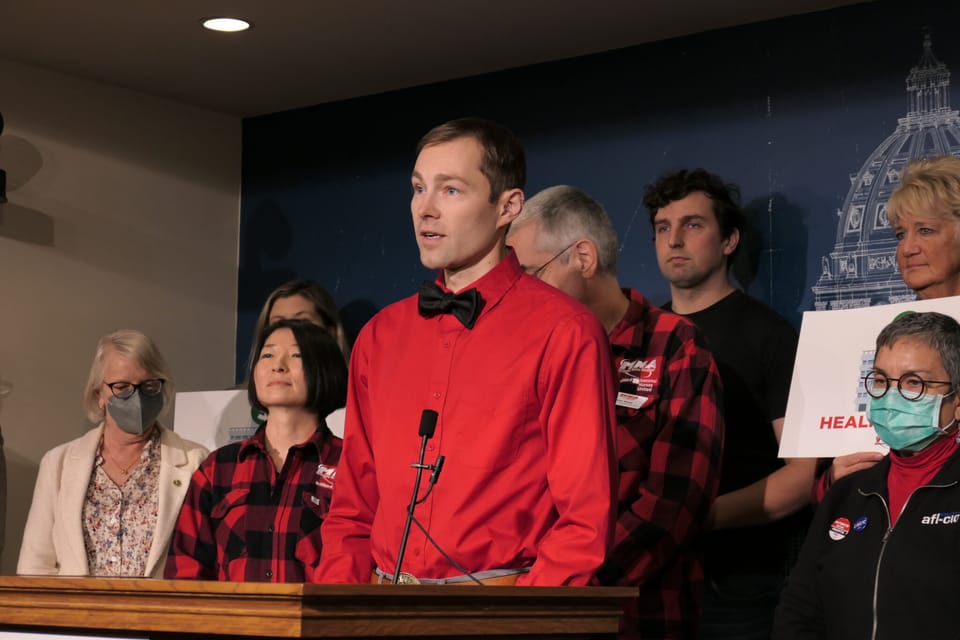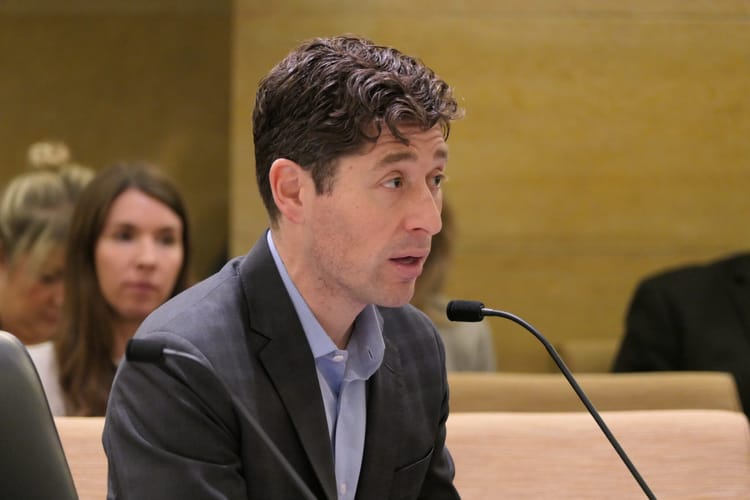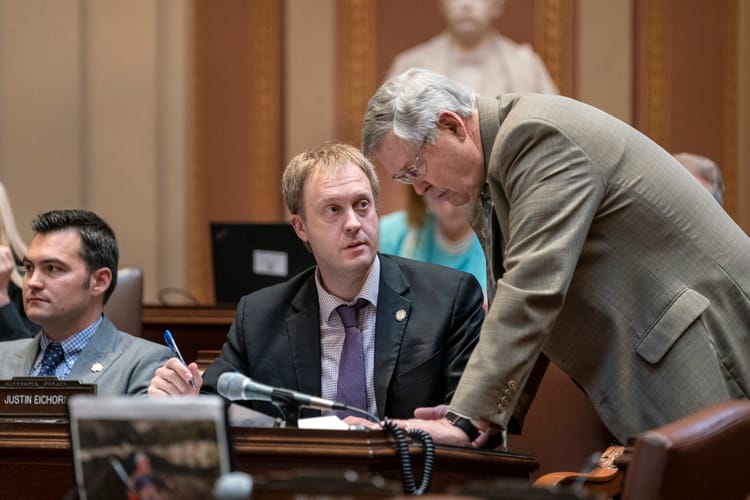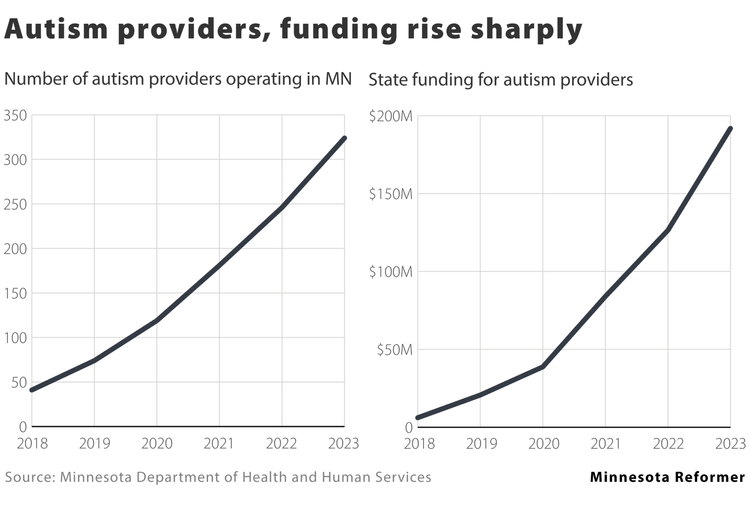Nurses union attacks hospital executive pay after legislative defeat — and other labor news

By Max Nesterak, Minnesota Reformer
Take a seat in the Break Room, our weekly roundup of labor news in Minnesota and beyond. This week; the Minnesota Nurses Association goes after hospital executive pay at the state Capitol as it faces its own internal strife; Minneapolis considers various pay models for Uber and Lyft drivers; the Steelworkers wartime alliance with Cleveland-Cliffs; unemployment for hourly school workers cost less than expected; St. Paul teachers to vote on strike authorization; Janitors and security guards authorize strike; Workers at Planned Parenthood of Wisconsin vote to unionize; and a profile of Shawn Fain, who wants to unionize another 150,000 workers.
Nurses want cap on hospital executive pay
The Minnesota Nurses Association, the union representing about 22,000 nurses, is pushing state lawmakers to cap hospital CEO pay, require hospitals to produce more transparent employee wage data and set stricter standards on hospital spending earmarked for the public’s benefit.
The union’s legislative agenda — dubbed the “Healing Greed Agenda” — is a pointed response to hospital leaders successfully killing the union’s key policy goal last year: mandatory staffing level committees at hospitals with equal weight for nurses and bosses. A Mayo Clinic executive threatened to move billions in future investments out of state if the bill became law, which ultimately sank the effort.
“Corporate health care executives think that they run the show,” Chris Rubesch, the nurses union’s new president, said Monday during a news conference at the Capitol. “They have the money to pay more than 60 lobbyists to ensure that the system stays exactly like it is, but we’re here to speak with one voice and demand change.”
The attack on hospital executives is a tried and true method for the union, which built its 2022 contract negotiations with seven of the state’s largest health systems on the excesses of hospital executive compensation. The strategy is backed by the nurses’ polling, which in 2022 showed just 11% of Minnesota voters said they viewed hospital executives favorably. By contrast, 84% of those polled said they viewed nurses favorably.
Shake-up at nurses union
The Minnesota Nurses Association is undergoing a leadership change that has gotten ugly. After a new reform-minded slate of candidates gained a majority on the board in January, they quickly held an emergency meeting on a Sunday to push out the executive director, Karlton Scott. His interim replacement then fired four union managers, as I detailed this week.
Scott was dogged by vague accusations of sexual impropriety, which the previous board investigated and decided to take no action on. But sources in the union, who spoke on the condition of anonymity, say the shake-up is also about the new board’s desire for a more politically active strategy, which focuses on public protests and pressure campaigns rather than dueling with hospital bosses through legal briefs.
Nurses unionize at Essentia clinic
Even as the nurses union deals with internal strife, they are notching new organizing victories. More than 90 nurses at Essentia Health’s Duluth Clinic 1st Street will join the Minnesota Nurses Association after a successful vote to unionize this week. The victory extends the union’s reach at Essentia, which operates 14 hospitals and 78 clinic and outpatient centers across Minnesota, Wisconsin and North Dakota. The union is also running campaigns to unionize nurses at Essentia’s Duluth Clinic 2nd Street and more than 350 nurse practitioners, physician assistants and other advanced care practitioners.
The union has also faced setbacks recently, which helped fuel the push for change. Notably, the MNA lost some 500 members in 2022 when nurses at Mayo Clinic’s Mankato hospital voted to dissolve the union after more than 70 years, embarrassing the union during contract negotiations with seven of the state’s largest health systems.
Minneapolis weighs various pay rates for Uber and Lyft drivers
The Minneapolis City Council continues to work on setting a minimum pay rate for Uber and Lyft drivers after a veto by the mayor last summer sent city staff back to the drawing board. A report presented to the council on Tuesday detailed three potential minimum pay rates:
$1.40 per mile and 51 cents per minute while transporting a rider;$1.17 per mile and 34 cents per minute while transporting a rider;A flat rate of $24 per hour for the time spent driving to pick up and transporting a rider
All three scenarios would bring drivers within the city’s minimum wage of $15.57, according to city staff. Drivers’ groups prefer the first option because it would guarantee them the highest pay per individual trip while Uber prefers the third option because it gives the company the greatest flexibility in setting fare prices.
There are limitations to the report, notably the lack of data available to city staff about current driver compensation. A spokesman for Uber also pointed out the city’s estimates don’t account for the fact that ridership is expected to fall as prices increase. After Seattle set minimum pay rates, drivers’ earnings per hour did not increase even though their pay per trip increased, according to Josh Gold, an Uber spokesman.
The Minnesota Department of Labor and Industry is currently conducting a massive analysis of Uber and Lyft data for all trips taken in the state in 2022, which will inform state lawmakers, who are committed to passing statewide minimum rates for drivers.
Steelworkers strike back
In the past two years, the United Steelworks and Cleveland-Cliffs have formed an unusually tight bond for a labor union and steel company. Both hope to scuttle Japanese Nippon Steel’s takeover of U.S. Steel, which employs more than 1,800 Minnesotans. So do politicians on the left and right, who would like “to gut this deal like a deer so they can pose for the pictures,” Aaron Brown writes this week in the Reformer.
The union wants Cliffs to buy U.S. Steel because the American company has promised to preserve union jobs, and it’s been a fair negotiator. Brown writes the wartime alliance has Cliffs CEO Lourenco Goncalves almost sounding like a union leader. But contractions in the steel industry in Europe foreshadow necessary lay-offs in the future, despite any corporate promises.
“A good relationship only goes so far in the mining and steel business,” Brown writes. “Money does all the rest.”
Unemployment for school workers cost less than expected
The cost of providing unemployment benefits to hourly school workers during the summer months cost far less than the state expected, meaning school districts won’t see any financial impact from the new law for another year or more.
Last year, Minnesota became the first state to extend unemployment benefits to hourly school workers, including bus drivers, cafeteria workers and paraprofessionals. The bill’s advocates pointed out that other seasonal workers were already entitled to unemployment benefits and argued the change would help school districts retain and recruit workers amid staffing shortages.
State lawmakers allocated $135 million to fund the new benefit based on a high-end estimate of what it would cost in one year. The Minnesota Department of Education received reimbursement claims from districts for just $36.4 million in 2023, leaving $98.6 million remaining for this summer and beyond, according to a recent report to the Legislature.
After the money runs out, school districts will continue to have about half of their costs covered by the state, said Sen. Jen McEwen, a Democrat from Duluth and chair of the Senate Labor Committee.
“The report is great to see,” McEwen said. “This is a benefit that is manageable and affordable, and (that) we should have been doing all along.”
St. Paul teachers to vote on strike
St. Paul public school teachers and support staff will vote on Feb. 15 on whether to authorize a strike as negotiations continue over a two-year contract. If members of the St. Paul Federation of Educators approve a strike, they would need to give 10-days notice. Teachers are seeking a $7,500 pay raise in the first year of the contract and 7.5% increase in the second. Teachers and staff struck for three days in 2020, which was the first time they had walked off the job in over 70 years.
Minneapolis and Rochester teachers have begun leaving right at the end of the school day on Wednesdays to draw attention to their demands for higher pay in new contracts.
Janitors and security guards authorize strike
Members of SEIU Local 26, which includes nearly 8,000 janitors and security guards, voted to authorize a strike on Saturday. The move increases pressure on cleaning and security subcontractors for offices and big box stores to reach a deal with its unionized workers on wages and benefits. No strike dates have been set, but the union says it will call an unfair labor practices strike if workers don’t reach “fair contracts” with the companies by March 2.
Planned Parenthood of Wisconsin goes union
Nurses and other health care workers at Planned Parenthood of Wisconsin voted to unionize this week, following hundreds of Planned Parenthood workers across the Upper Midwest who recently finalized their first collective bargaining agreement.
As a result of the vote, the Wisconsin Federation of Nurses and Health Professionals will represent 133 health care workers employed by Planned Parenthood.
Shawn Fain looks to unionize 150,000 more workers
Coming off a historic victory against the Big Three American automakers, United Auto Workers President Shawn Fain has set his sights on Tesla and non-union foreign automakers including BMW, Nissan, Subara and Volkswagen. Bloomberg reporters Josh Eidelson and Gabrielle Coppola profiled Fain, who “has combined a populist platform worthy of Bernie Sanders with a Trump-tier knack for spectacle.”
Part of UAW’s success, they write, is due to Fain’s strategy of negotiating with all three automakers at once, which allowed them to leverage one company’s concession to win it at the other two. Now, he’s taking a similar strategy to unionizing the rest of the auto industry.
“Rather than training resources on a couple of relatively promising targets, he’s going after the whole industry at once, announcing his ambitions to the world and banking on recent momentum to notch some quick wins, as the Starbucks union did in 2022,” they write.
UAW has collected thousands of union cards already, but the union will have to overcome strong opposition from corporations facing few consequences for violating federal labor law, and in southern states unfriendly to organized labor.
Minnesota Reformer is part of States Newsroom, a network of news bureaus supported by grants and a coalition of donors as a 501c(3) public charity. Minnesota Reformer maintains editorial independence. Contact Editor Patrick Coolican for questions: info@minnesotareformer.com. Follow Minnesota Reformer on Facebook and Twitter.





Member discussion